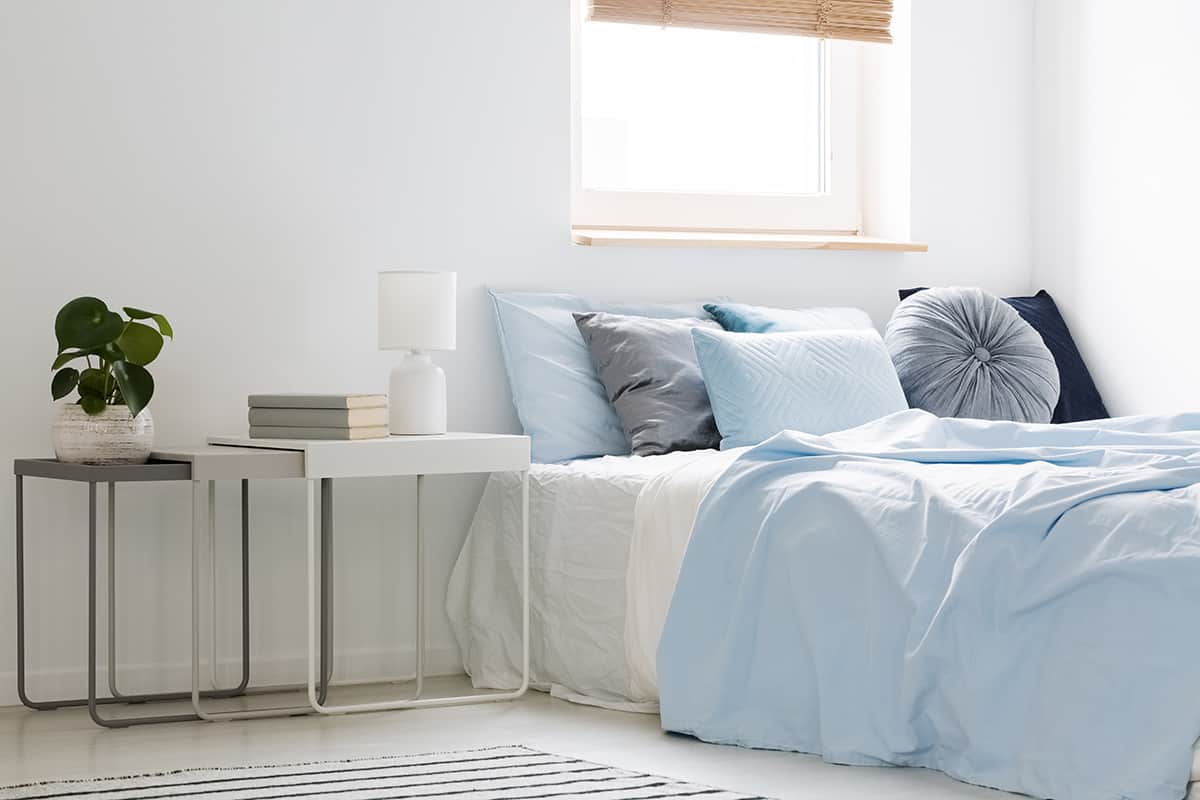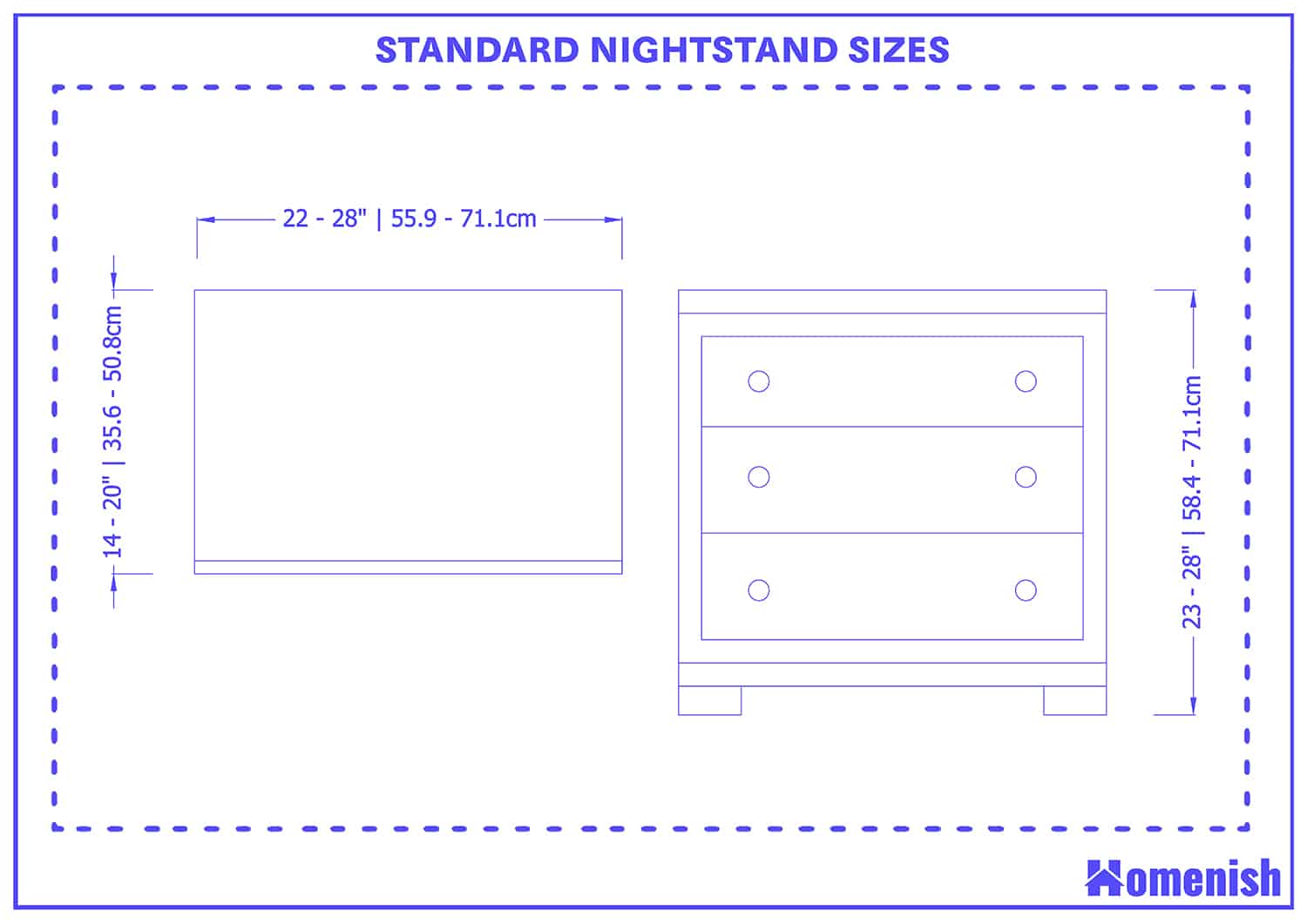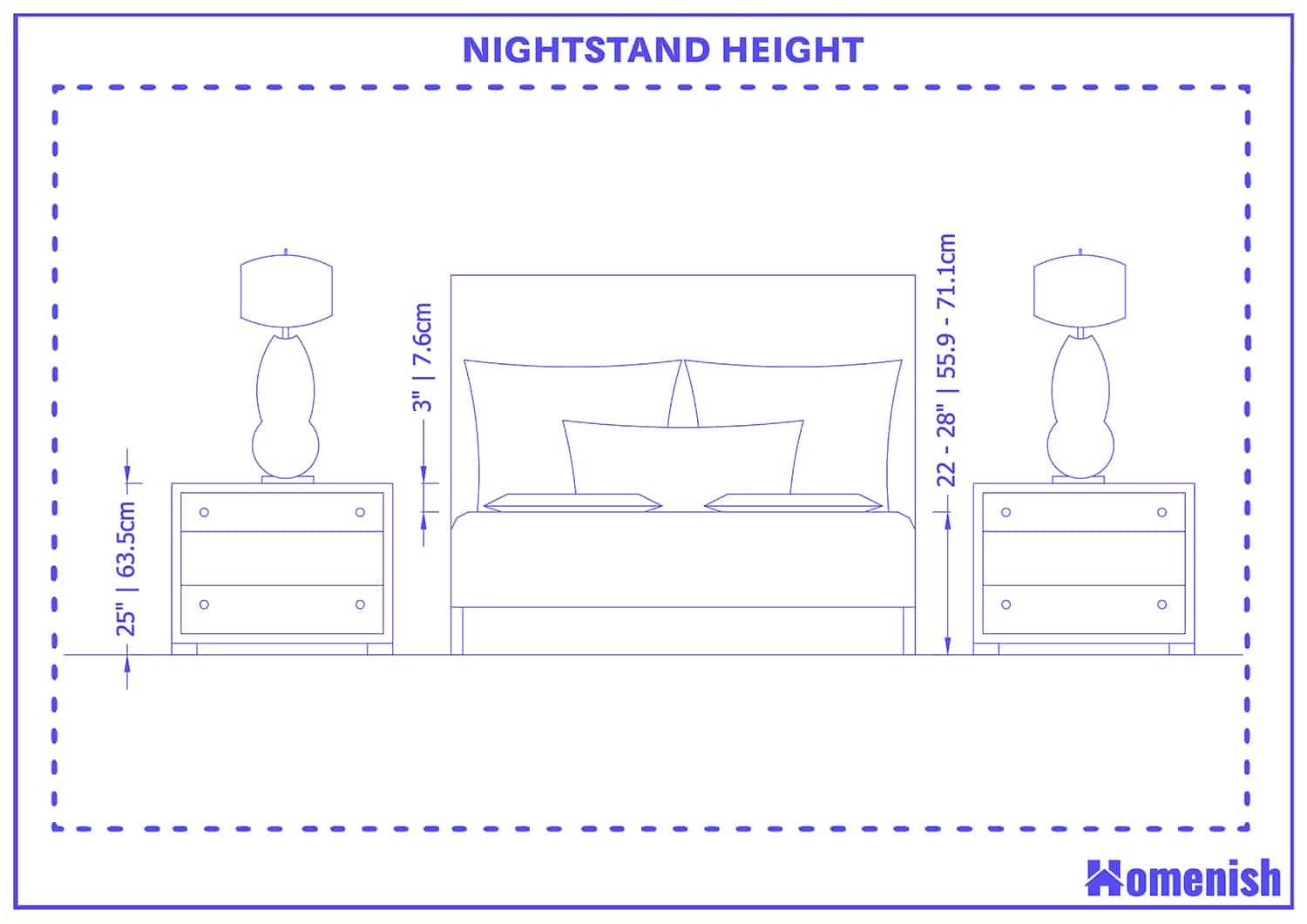Nightstands come in a variety of sizes to suit different bedroom dimensions and the requirements of the user. Here we look at the standard and non-standard nightstand sizes.
A standard nightstand should be between 23 inches and 28 inches in height, and between 22 and 28 inches in width. It should have a depth of between 14 and 20 inches.
Nightstand Height
The height of a nightstand is important because it needs to correlate to the height of your bed so that it doesn’t look out of place, and it also needs to be easy to reach from your bed so that you can grab a book or turn your lamp off without any trouble while you’re in bed.
Standard Nightstands
The standard height of a nightstand is anywhere between 23 inches and 28 inches. These work well with beds that are of an average height, but you should always measure the height of your bed first and take this into account when purchasing nightstands.
For the best look and functionality, the top of your mattress should be no more than three inches taller or shorter than the top of your nightstand.
If you have a standard-sized nightstand that has a height measurement of 25 inches, then the height of your mattress, when positioned on your bed, should be between 22 inches and 28 inches from the floor.
Tall Nightstands
Tall nightstands will look imposing in a bedroom, and they can help to create a sense of grandeur and importance. A tall nightstand will measure anywhere between 28 and 35 inches in height.
Extra-Tall Nightstands
Nightstands that have a height of over 35 inches are considered to be tall nightstands. If you lack storage in your bedroom, then tall nightstands are a good way to maximize storage without needing to use any additional floor space. Tall nightstands can also double up as a dressing area; however, they can look unusual if your bed is not particularly tall.
Nightstand Width
The width of the nightstand you choose is usually dependent on the amount of space you have available, as well as the size of your bed and the amount of surface area you need.
If you only need a lamp and space to set down a book, then a narrow nightstand will allow enough surface area for this; however, if you want a large houseplant or music speakers on your nightstand, then you’ll need a wider one to create a decent amount of surface space.
Choosing a nightstand that is wider rather than deeper is usually the best option if you want to create more surface space because a deep nightstand can impede your ability to get in and out of bed.
Narrow Nightstands
A narrow nightstand will have a width of between 18 and 20 inches. These types of nightstands work well with twin beds because the scale of the bed compared to the nightstand looks appropriate.
If you have a king bed, then a narrow nightstand can look feeble by comparison to the size of the bed, so opt for a wider nightstand to keep the furniture in proportion. Narrow nightstands are also a good option if you have limited floor space and don’t want the bedroom to feel too cramped.
Standard Nightstands
A standard nightstand will have a width of between 22 and 28 inches. These are the most common size of nightstands because they can work well with a wide range of furniture sizes in a bedroom.
Opt for a standard width nightstand at the smaller end of the scale if you have limited space available, or lean towards the wider end if you want more space for storing your essential items.
Wide Nightstands
Wide nightstands have several benefits you can take advantage of if you have enough space to accommodate them. They create a sense of grandeur in a bedroom, especially when used alongside other chunky or oversized furniture.
Wider nightstands will also contain more storage space in their drawers and give you a bigger surface area to work with where you could display photo frames, flowers, or a large lamp. These types of nightstands will be wider than 30 inches and can go up to 40 inches in width. Wide nightstands can also double up as a dresser where you can display make-up, perfumes, and skincare items.
Nightstand Depth
Nightstand depth can affect the storage space contained in the nightstand drawers, and it will also impact the surface space of the nightstand.
Shallow Nightstand
A shallow nightstand will have a minimum depth of 12 inches, up to 14 inches. Most nightstands won’t be any shallower than this because they lack stability.
A shallow nightstand is a good choice in a child’s bedroom because it won’t get in their way when they are trying to get out of bed, but it will provide a handy spot for them to keep a book or a nightlight. Children also tend to have smaller beds than adults, which will look more in proportion with a shallow nightstand.
Standard Nightstand
A standard nightstand will have a depth of between 14 and 20 inches. The majority of nightstands for sale will fit into this size range because it makes for a surface that is big enough to keep a variety of items while small enough that it doesn’t look overbearing or out of place in an average-sized room.
Deep Nightstand
A deep nightstand will have a depth of between 20 and 30 inches. These types of nightstands are best reserved for large bedrooms because they can take up a lot of floor space, though the advantage is that they will have much deeper drawers for storing more items.
You will need an oversized bed to go with a deep nightstand for two reasons. Firstly, from an aesthetic point of view, your nightstand will create an unbalanced look if the bed is not in proportion with it, which can make the whole room feel awkward.
Secondly, a deep nightstand will extend along the side of your bed, which can make it difficult to get out of bed in the morning unless you have more space to work with on the mattress.








